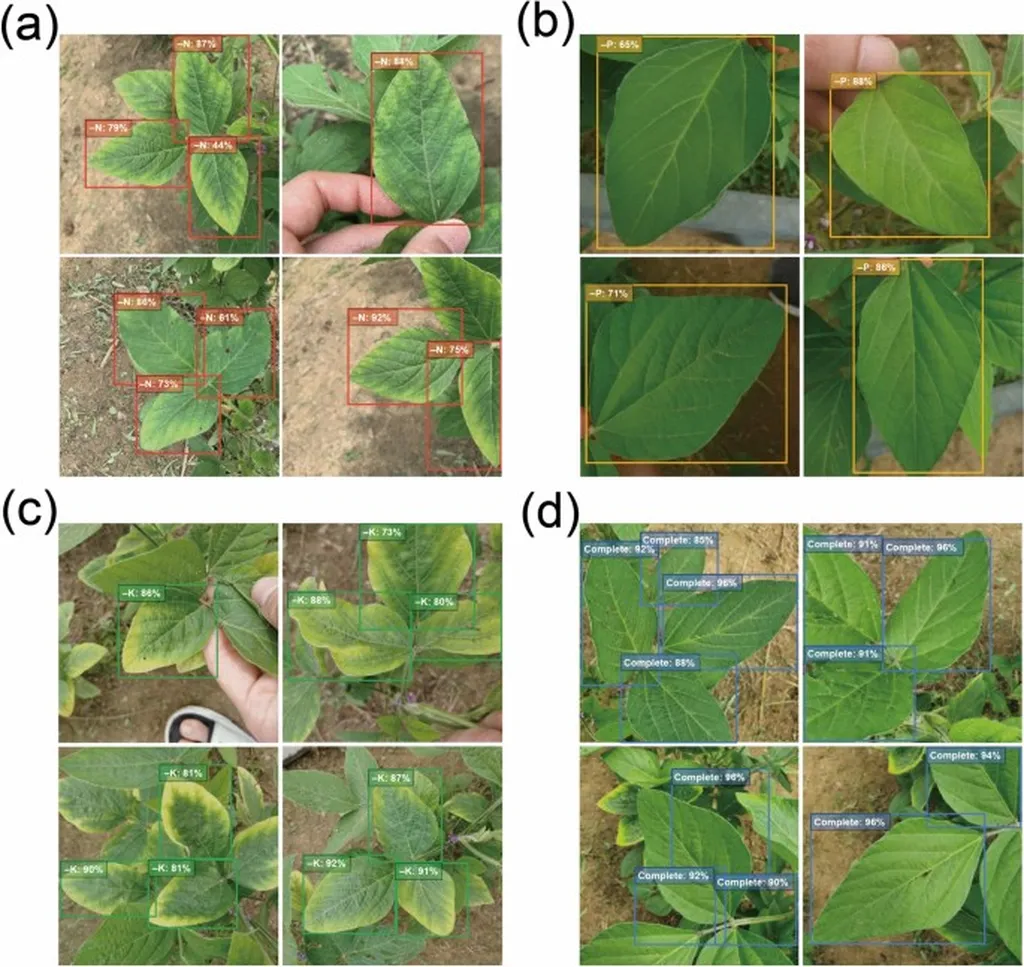In the heart of Nanjing, China, a groundbreaking study led by Jiarui Feng from the College of Smart Agriculture at Nanjing Agricultural University is revolutionizing the way we understand soybean disease resistance. The research, published in the journal ‘Plants’ (translated from Chinese), introduces a novel approach to stoma detection in soybean leaves, offering significant implications for the agricultural and energy sectors.
Soybean rust, a devastating disease, poses a substantial threat to global soybean production. Traditional methods of detecting stomata—the tiny pores on plant leaves that play a crucial role in immune responses—have been hindered by complex backgrounds and leaf vein structures. This is where Feng’s team stepped in, developing the Soybean Stoma-YOLO (SS-YOLO) model. By incorporating advanced attention mechanisms into the YOLOv8 framework, they significantly enhanced the model’s ability to extract multi-scale and irregular stomatal features.
“The SS-YOLO model achieved an impressive detection accuracy of 98.7%,” said Feng. “This accuracy allows us to effectively extract stomatal features such as length, width, area, and orientation, and calculate related indices like density, area ratio, variance, and distribution.”
The study compared three soybean varieties—Dandou21 (DD21), Fudou9 (FD9), and Huaixian5 (HX5)—across different stages of rust disease. DD21 stood out, exhibiting less variation in stomatal characteristics and greater uniformity in distribution. “DD21 maintained stable stomatal morphology, indicating its rust disease resistance,” Feng explained. “This stability is crucial for breeding programs aimed at developing disease-resistant soybean varieties.”
The commercial impacts of this research are profound. For the agricultural sector, the SS-YOLO model offers a powerful tool for variety breeding and disease resistance research. Farmers can benefit from more resilient soybean crops, leading to increased yields and economic gains. The energy sector also stands to gain, as soybeans are a vital source of biodiesel. Disease-resistant varieties can ensure a steady supply of soybeans for biofuel production, contributing to energy security and sustainability.
Looking ahead, this research opens new avenues for exploring the relationship between stomatal characteristics and disease resistance in other crops. The SS-YOLO model’s success in soybean detection suggests its potential applicability to other plant species, broadening its impact on global agriculture.
As Feng and his team continue to refine their model and expand its applications, the future of disease-resistant crop breeding looks brighter. Their work not only advances our understanding of plant immune responses but also paves the way for innovative solutions to some of the most pressing challenges in agriculture and energy.

